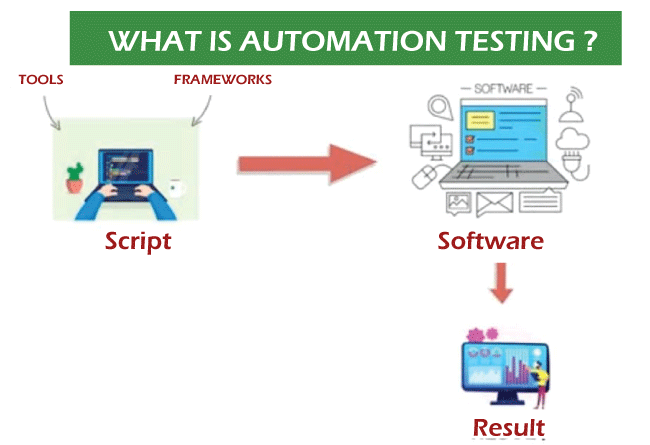Grasping Automation Testing: Devices, Techniques, and Advantages
Grasping Automation Testing: Devices, Techniques, and Advantages
Blog Article
From Guidebook to Automated Screening: A Comprehensive Overview to Transitioning Smoothly and Successfully
In the realm of software program screening, the change from handbook to automated processes has become a progressively important transition for organizations seeking to boost effectiveness and precision in their testing techniques. The trip from handbook to automated screening is not without its obstacles, however when come close to tactically and with a clear strategy in mind, the benefits can be considerable.
Advantages of Automated Checking
Automated testing supplies various benefits, improving performance and precision in software advancement processes. One main advantage is the substantial reduction in screening time. Automated tests can be run at the same time on numerous tools and running systems, considerably accelerating the screening stage contrasted to manual testing. This enhanced efficiency enables faster feedback on the high quality of the software, making it possible for developers to identify and resolve issues immediately.
Furthermore, automated screening guarantees a higher degree of accuracy in spotting defects. Uniformity in testing is likewise enhanced, as automated tests carry out the very same actions specifically each time they are run.
Choosing the Right Tools

To start with, analyze your objectives and demands. Comprehend the extent of your job, the modern technologies included, and the skill collection of your group. This analysis will certainly assist you figure out the functions and capacities you need in your testing devices.
Second of all, consider the compatibility of the tools with your existing systems and processes. Smooth integration with your existing software program development lifecycle is essential to ensure a smooth change to automation.
Furthermore, assess the scalability and flexibility of the tools. As your testing requires evolve, the tools must be able to adapt and fit modifications effectively.
Lastly, aspect in the assistance and neighborhood around the tools. When implementing automated testing, robust assistance and an active user area can supply useful sources and aid. By thoroughly considering these facets, you can choose the right tools that align with your requirements and set the phase for an effective change to automated testing.
Writing Reliable Test Scripts

When crafting test scripts, it is vital to think about the details needs of the software being evaluated and make certain that the manuscripts attend to all critical functionalities. Clear and detailed calling conventions for test scripts and examination cases can enhance readability and maintainability. Additionally, integrating mistake handling mechanisms within the examination scripts can assist in identifying and addressing concerns immediately.
Furthermore, arranging test manuscripts into modular elements can enhance reusability and scalability, reducing redundancy and boosting performance in test script maintenance. Normal testimonials and updates to examine scripts are important to maintain pace article with advancing software program requirements and functionalities. By complying with these principles, testers can produce reliable and durable test scripts that contribute dramatically to the success of automated screening procedures.
Integrating Automation Into Workflows
By flawlessly incorporating automated screening devices like Selenium or Appium right into the software advancement lifecycle, teams can accomplish faster comments on code modifications, leading to quicker pest discovery and resolution. This integration allows for continual screening throughout the development process, ensuring that any issues are recognized early on, resulting in higher software application quality. Appropriate integration of automation devices needs collaboration between growth, screening, and procedures groups to develop a unified process that optimizes performance and effectiveness in providing top quality software application products.
Ensuring a Smooth Shift
Effectively transitioning to automated screening entails precise planning and mindful execution to minimize interruptions and optimize performance in the software development procedure - automation testing. To ensure a smooth shift, it is important to start by performing a thorough evaluation of the present testing processes and identifying locations where automation can bring the most significant benefits. Engaging with all stakeholders at an early stage at the same time, including programmers, testers, and job supervisors, is critical for garnering assistance and buy-in for the automation campaign
Communication is vital throughout this transition phase. Clear interaction of the goals, advantages, and expectations of automated screening assists to take care of any kind of resistance or issues informative post that might occur. In addition, offering sufficient training and resources for staff member to upskill in automation tools and techniques is vital for guaranteeing an effective transition.

Conclusion
To conclude, transitioning from guidebook to automated testing provides numerous benefits, including boosted performance and dependability. By choosing the proper devices, composing efficient test scripts, and integrating automation perfectly right into workflows, organizations can make sure a effective and smooth shift. It is vital to welcome automation as a valuable asset in software testing processes to boost overall quality and performance.
In the realm of software application testing, the shift from guidebook to automated processes has come to be a progressively crucial shift for organizations looking for to enhance effectiveness and precision in their testing practices. Automated examinations can be run concurrently on multiple tools and operating systems, dramatically speeding up the testing phase contrasted to hands-on testing. Consistency in testing is also improved, as automated tests execute the very same actions precisely each time they are run.To make sure the effective implementation of selected screening tools, the development of reliable examination manuscripts plays a vital duty in validating the capability and performance of automated procedures - automation testing. By following these principles, testers can develop durable and reliable test manuscripts that contribute significantly to the success of automated screening processes
Report this page